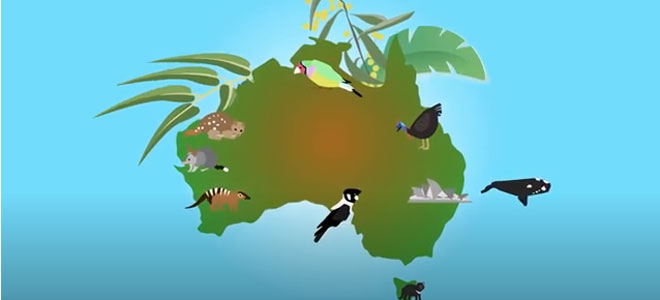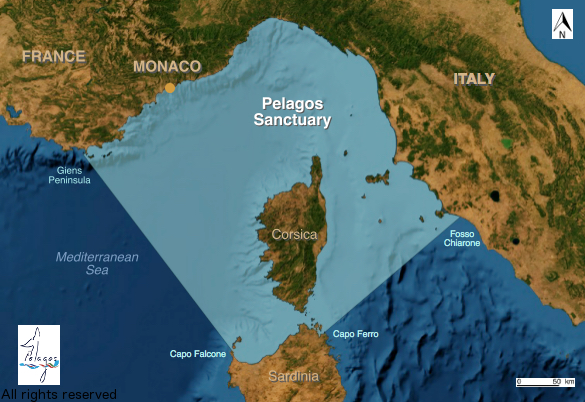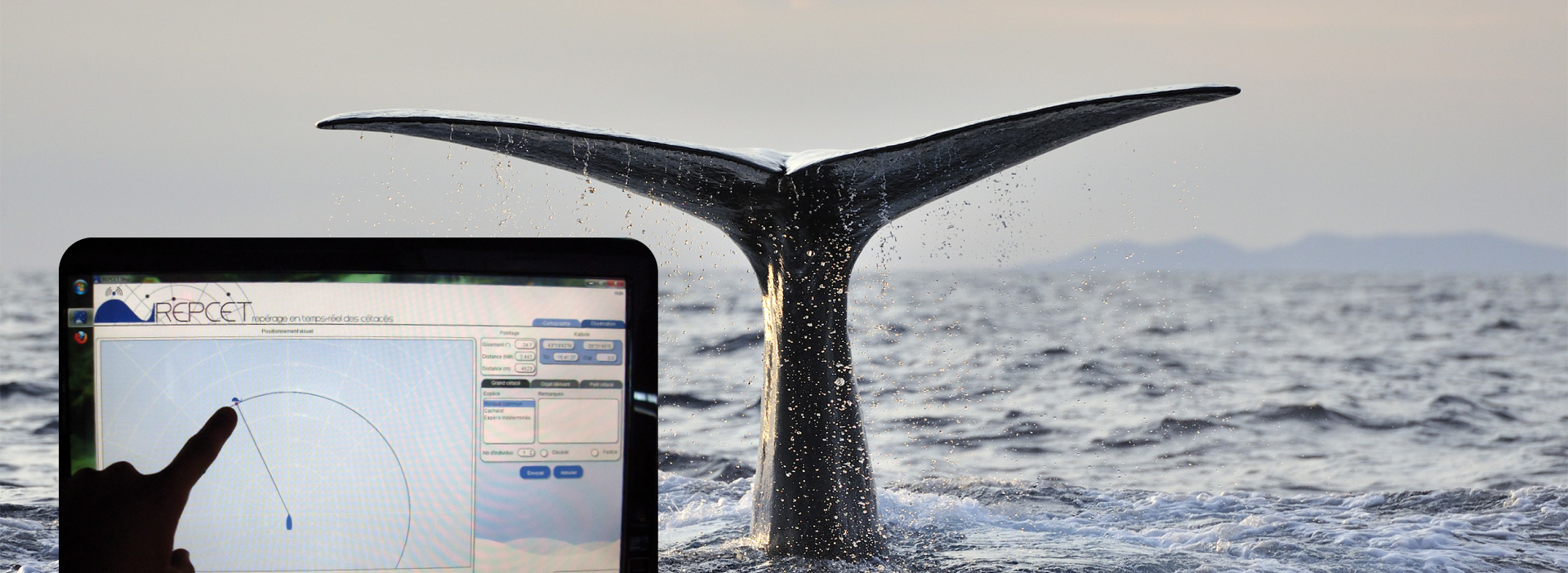Conservation database
At IWC67 in October 2018 the Commission endorsed a proposal from New Zealand to revise the existing template for voluntary conservation reports (VCRs) and develop an integrated database. The detailed proposal, which includes the rationale for changing the reporting template, is in IWC/67/CC/10 (also as CC/68A/INFO/05).
This publicly accessible database is available from the IWC website and searchable by country or conservation theme in alignment with the Strategic Plan and Workplan of the Conservation Committee.The database aims to streamline the reporting requirements on Contracting Governments, and improve the accessibility, effectiveness and reach of information submitted in Voluntary Conservation Reports.
Find our Scientific Literature: Searchable Database
Australia Underwater Noise
Section:
Theme: Anthropogenic underwater noise
Country profile on Whale Watching Handbook
Date started:
Date ended:
Status:
External URL:
The Australian Government continues to implement and promote a set of requirements aimed at minimising the impacts of seismic activities undertaken for oil and gas exploration. Practical standards to minimise the risk of acoustic injury
to whales in the vicinity of seismic survey operations, and provides guidance on the legal responsibilities of proponents undertaking the activities.
The Australian Government’s National Offshore Petroleum Safety and Environmental Management Authority (NOPSEMA) is the sole regulator of all offshore petroleum facilities in Commonwealth waters, and in coastal waters where state powers have been conferred. NOPSEMA is a Commonwealth Statutory Agency.
Australia Research Projects
Section:
Theme: Anthropogenic underwater noise
Country profile on Whale Watching Handbook
Date started:
Date ended:
Status:
External URL:
The Australian Government’s Australian Marine Mammal Centre (AMMC) is based in Hobart, Tasmania. The Centre leads on providing scientific research and advice to inform and support Australia’s marine mammal conservation priorities.
Australia cetacean conservation since IWC66.
Section:
Theme: Conservation Management plans
Country profile on Whale Watching Handbook
Date started:
Date ended:
Status:
External URL:

To ensure the management of cetaceans continued to reflect best practice and was based on current scientific evidence, the Australian Government implemented the Whale and Dolphin Protection Plan. This plan provided resources for Australian local and state governments and the scientific community to undertake work that will help manage and protect cetaceans.
Australia Management Plans
Section:
Theme: Conservation Management plans
Country profile on Whale Watching Handbook
Date started:
Date ended:
Status:
External URL:
Government Cetacean Management Workshop – This is an annual forum attended by all relevant states and territories which allows for the timely identification of cross-jurisdictional cetacean issues, the sharing of management experience, and review and comment on emerging cetacean policy issues (both in Australia and overseas).
Cetaceans Non-Government Organisation (NGO) Roundtable – the Australian Government holds roundtables on cetacean matters with NGOs twice a year. This helps to ensure that issues of concern to civil society on cetacean policy and management at both national and international levels, are identified, discussed and addressed by the Government, as appropriate.
Australia Protected Areas
Section:
Theme: Sanctuaries and protected areas
Country profile on Whale Watching Handbook
Date started:
Date ended:
Status:
External URL:
testing
Australia Ship Strikes
Section:
Theme: Ship Strikes
Country profile on Whale Watching Handbook
Date started:
Date ended:
Status:
External URL:
National strategy for reducing vessel strike on cetaceans and other marine megafauna
Assessing the level of risk posed by vessel collisions to cetaceans – building on a project that assessed the risk of large vessels colliding with humpback whales in the Great Barrier Reef Marine Park
Australian Government agencies at all levels have worked together over many years to establish strong communications and operations networks to manage and respond to events such as whale and dolphin strandings.
Australia Whale watching
Section:
Theme: Whale watching
Country profile on Whale Watching Handbook
Date started:
Date ended:
Status:
External URL:
The management of whale watching in Australia is a multi-jurisdictional arrangement between the Australian Government, the Great Barrier Reef Marine Park Authority and state and territory governments.
Australian National Guidelines for Whale and Dolphin Watching 2005
Australian National Guidelines for Whale and Dolphin Watching 2017.
Australian Government agencies at all levels have worked together over many years to establish strong communications and operations networks to manage and respond to events such as whale and dolphin strandings.
Brazil agreements
Section:
Theme: Conservation Management plans
Country profile on Whale Watching Handbook
Date started:
Date ended:
Status:
External URL:
The Brazilian government is a party to multilateral cetacean agreements, such as the IWC, CITES, and CMS.
Brazil Protected Areas
Section:
Theme: Sanctuaries and protected areas
Country profile on Whale Watching Handbook
Date started:
Date ended:
Status:
External URL:
The government of Brazil established two large Federal Marine Protected Areas in 2018, including the two most remote islands of the national territory - the São Pedro and São Paulo archipelagos - and also the chain of submarine mountains that connects the Brazilian continental shelf to the Trindade and Martin Vaz Archipelago. The two MPAs together cover an area of 92.6 million hectares, of which 81.1 million hectares correspond to areas of sustainable use and 11.5 million hectares correspond to protection, the equivalent of the combined territories of France and Germany.
Regarding the protection of coastal areas, it is important to mention a new reserve created in Maranhão called Baía do Tubarão Extractive Reserve. This MPA was established to protect a complex of bays, rivers and estuaries.
The Brazilian National Sanctuary of Whales and Dolphins was created in 2008.
Brazil Whale Watching
Section:
Theme: Whale watching
Country profile on Whale Watching Handbook
Date started:
Date ended:
Status:
External URL:
Act No. 444/2014 of the Ministry of the Environment of Brazil determines the "Official National List of Endangered Fauna," including mammals.
Currently Federal Law 7643/87 forbids the hunting and harassment of cetaceans in Brazilian waters and the Edict 117/96 (modified by the Edict 24/2002) established the whale watching regulations.
A new National Conservation Action Plans (NAPs) for small and large cetaceans is being developed.
Brazil cetacean conservation
Section:
Theme: Strandings
Country profile on Whale Watching Handbook
Date started:
Date ended:
Status:
External URL:
The National Stranding Network coordinated by ICMBio has been working along the Brazilian coast to evaluate and record cetacean stranding rates and cumulative effects of anthropogenic activities on these animals.
France National Strandings Scheme
Section:
Theme: Strandings, Conservation Management plans
Country profile on Whale Watching Handbook
Date started:
Date ended:
Status:
External URL:
The national strandings scheme provides a yearly synthesis on beached cetaceans allowing baseline data to be collected about species diversity, causes of death, pathologies, population demographic structure, ecological parameters and levels of contaminants. Back calculation of cetacean carcass trajectories allows their origin to be determined.
France Protected Areas
Section:
Theme: Sanctuaries and protected areas
Country profile on Whale Watching Handbook
Date started:
Date ended:
Status:
External URL:

The Pelagos whale sanctuary encompasses both territorial and international waters of the north-western Mediterranean.
France Protected Areas
Section:
Theme: Sanctuaries and protected areas
Country profile on Whale Watching Handbook
Date started:
Date ended:
Status:
External URL:
France's protected natural areas cover approximately 23.5% of waters.
Within the scope of EC commitments to Natura 2000, the Ministry of Ecology delegated the implementation of a knowledge acquisition program (PACOMM) on seabirds and marine mammals to the Agency for marine protected areas (AAMP). The goal was to assess the initial state of seabird and cetacean populations and their conservation status in Natura 2000 sites and within the parameters of national marine parks and offshore Natura 2000 sites. The program consisted of a combination of visual aerial surveys, site-based acoustic monitoring surveys, telemetry studies and local site-based approaches.
France Cetacean Conservation
Section:
Theme: Ship Strikes
Country profile on Whale Watching Handbook
Date started:
Date ended:
Status:
External URL:

REPCET is a collaborative system that moniters ships strikes in the PELAGOS sanctuary
France Whale watching
Section:
Theme: Whale watching
Country profile on Whale Watching Handbook
Date started:
Date ended:
Status:
External URL:
The French mainland has coasts on the Mediterranean, the Atlantic, and the Channel, while its overseas territories span temperate, tropical and even polar and sub polar waters around the globe. Together these areas offer a widely varying range of opportunities for whale and dolphin watching involving different species, habitats and whale-watching platforms.
France Whale watching
Section:
Theme: Whale watching
Country profile on Whale Watching Handbook
Date started:
Date ended:
Status:
External URL:
The PELAGOS/ACCOBAMS cooperative agreement works to ensure quality and minimise negative impacts of whale watching activities to cetaceans.
France National Strandings Scheme
Section:
Theme: Strandings, Conservation Management plans
Country profile on Whale Watching Handbook
Date started:
Date ended:
Status:
External URL:
The national strandings scheme provides a yearly synthesis on beached cetaceans allowing baseline data to be collected about species diversity, causes of death, pathologies, population demographic structure, ecological parameters and levels of contaminants. Back calculation of cetacean carcass trajectories allows their origin to be determined.
France Agreements
Section:
Theme: Cooperation and Research
Country profile on Whale Watching Handbook
Date started:
Date ended:
Status:
External URL:
France is a member state of a number of multilateral agreements related to cetaceans
France Agreements
Section:
Theme: Cooperation and Research
Country profile on Whale Watching Handbook
Date started:
Date ended:
Status:
External URL:
France is leading an eco-regional program in order to contribute to the CCAMLR MPA Network.
France Legal Protections
Section:
Theme: Other
Country profile on Whale Watching Handbook
Date started:
Date ended:
Status:
External URL:
All marine mammals are protected by law in French waters.
France Legal Protections
Section:
Theme: Other
Country profile on Whale Watching Handbook
Date started:
Date ended:
Status:
External URL:
France is a member country of the European Union, therefore it enforces EU regulations concerning marine mammals and environment.
Gabon Legal Protections
Section:
Theme:
Country profile on Whale Watching Handbook
Date started:
Date ended:
Status:
External URL:
Gabonese laws provide different levels of protection to cetacean species.
Gabon Marine Conservation
Section:
Theme: Bycatch, Sanctuaries and protected areas, Conservation Management plans
Country profile on Whale Watching Handbook
Date started:
Date ended:
Status:
External URL:
Gabon bleu is an ambitious government initiative to better conserve marine environments.
Gabon Marine Conservation
Section:
Theme: Bycatch, Sanctuaries and protected areas, Conservation Management plans
Country profile on Whale Watching Handbook
Date started:
Date ended:
Status:
External URL:
Gabon bleu is an ambitious government initiative to better conserve marine environments.
Gabon Protected Areas
Section:
Theme: Sanctuaries and protected areas
Country profile on Whale Watching Handbook
Date started:
Date ended:
Status:
External URL:
Gabon protects approximetly 26% of Gabon’s marine waters.
Gabon Marine Conservation
Section:
Theme: Bycatch, Sanctuaries and protected areas, Conservation Management plans
Country profile on Whale Watching Handbook
Date started:
Date ended:
Status:
External URL:
Gabon bleu is an ambitious government initiative to better conserve marine environments.
